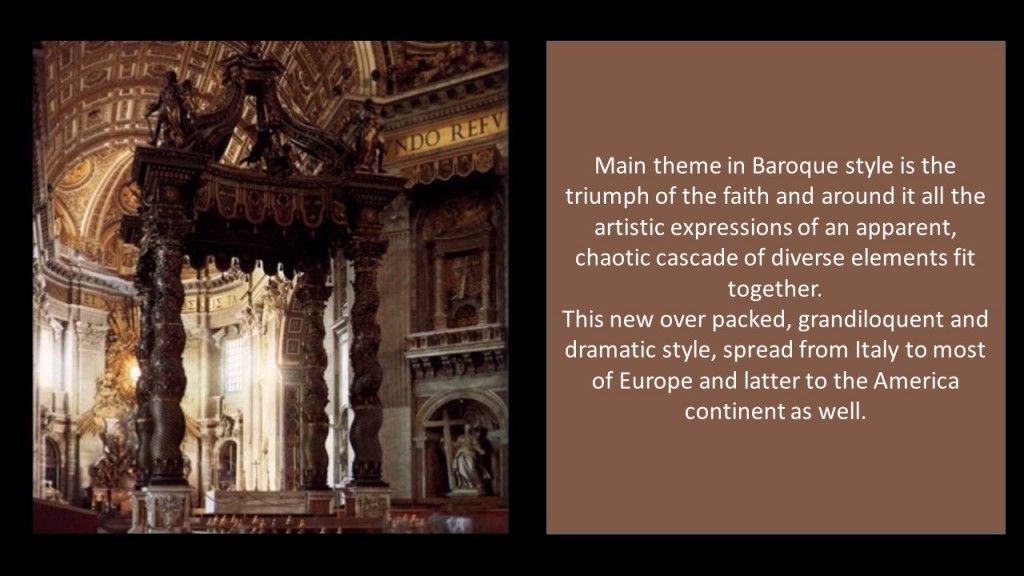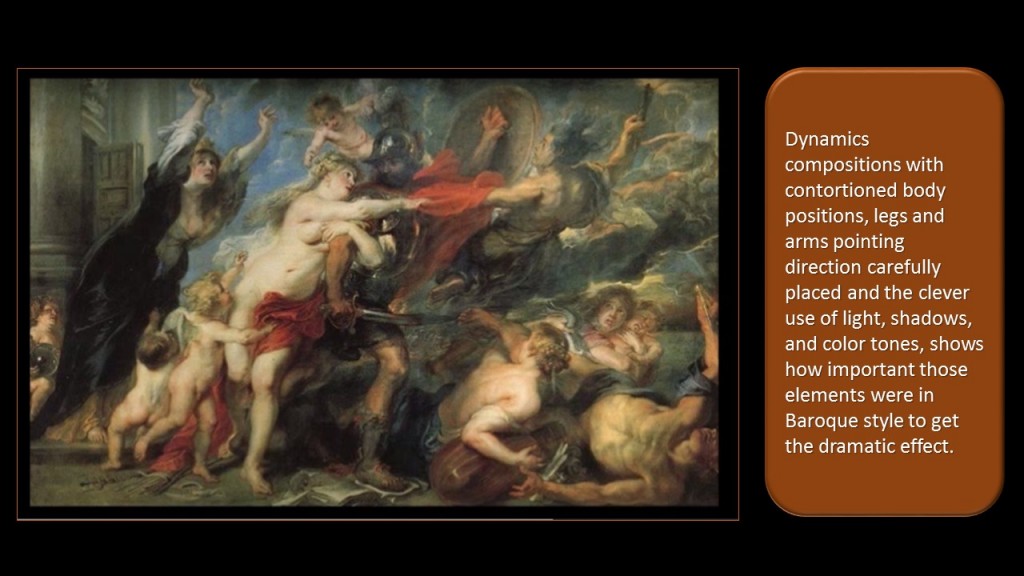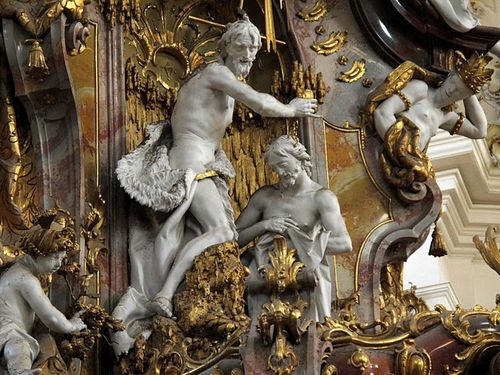Baroque Art.
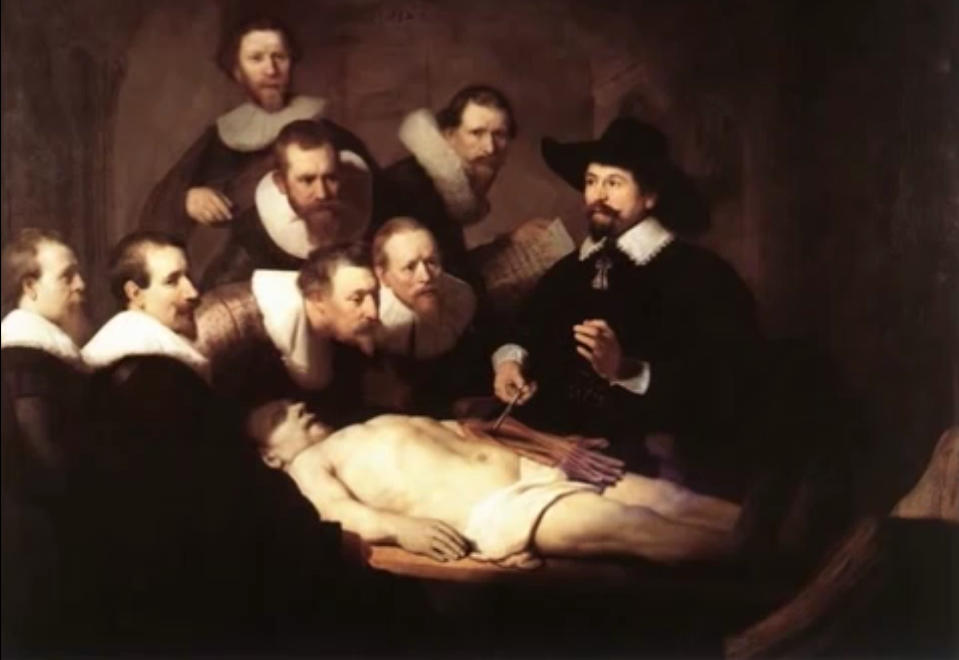
General Elements.
Baroque Art is a period of artistic style that used exaggerated emotion and clear details representation in a sore of theatrical setting to easily be interpreted using exuberance of elements in a dynamic representation witch to produce drama and high tension through the artistic work, usually done in monumental size. This characteristics applied mainly to: sculpture, painting, architecture, ceramic, jewelry, furniture textiles and also to other cultural manifestations like: literature, dance, theater, and music that were the fountain of inspiration to the plastic expressions.
The word “Baroque” has resonance and application that extend beyond a simple lineal and narrow nomenclature to either style or period.The term “Baroque” may still be used in our days by Art Historian and general public, referring to works of art, craft, or design that have excessive ornamentation or complexity of lines, figures and diversity of artistic elements. The word baroque is derived from the Portuguese word “barroco”, in Spanish “barroco”, or from French “baroque”, all of which refer to a “rough or imperfect pearl.”
The Church and the aristocracy during the Cinquecento (1500-1600) followed the evolution of the Mannerism stages in the late Renaissance period and welcome the Baroque art in the new century (1600). In the city of Rome, Italy where this Baroque art started, they realise early enough how effective the brand new style manages to communicate their messages as a class in power to the viewers.
In the historical contest a break due to different point of view about faith between Catholics and Protestants and also a predominance of Absolute Monarchies, was marking the social fray, been necessary for them to make the best use possible of this new style as propaganda, commissioning works who embrace the spectators as characters themself in to the artistic work that surrounded them, through different plastic elements, absorbing their attention through a lot of drama, making them feel totally identify with the closeness of the messages.
The main theme in Baroque style was the triumph of faith and around it, all the artistic expression of an apparent; chaotic cascade of diverse elements fit together, elevating this religious concept to its highest expression, influencing as well others non religious aspects in the daily life of a convulsed society with so many contrasts, in which the minority of people are insanely rich; while the majority of people were drowning in extreme poverty. Is not strange for instance they were compel to evade their sad reality, contemplating imaginary and pleasant, dramatic scenes, addressed to praise the honor and glory and the triumph of the light over the darkness.
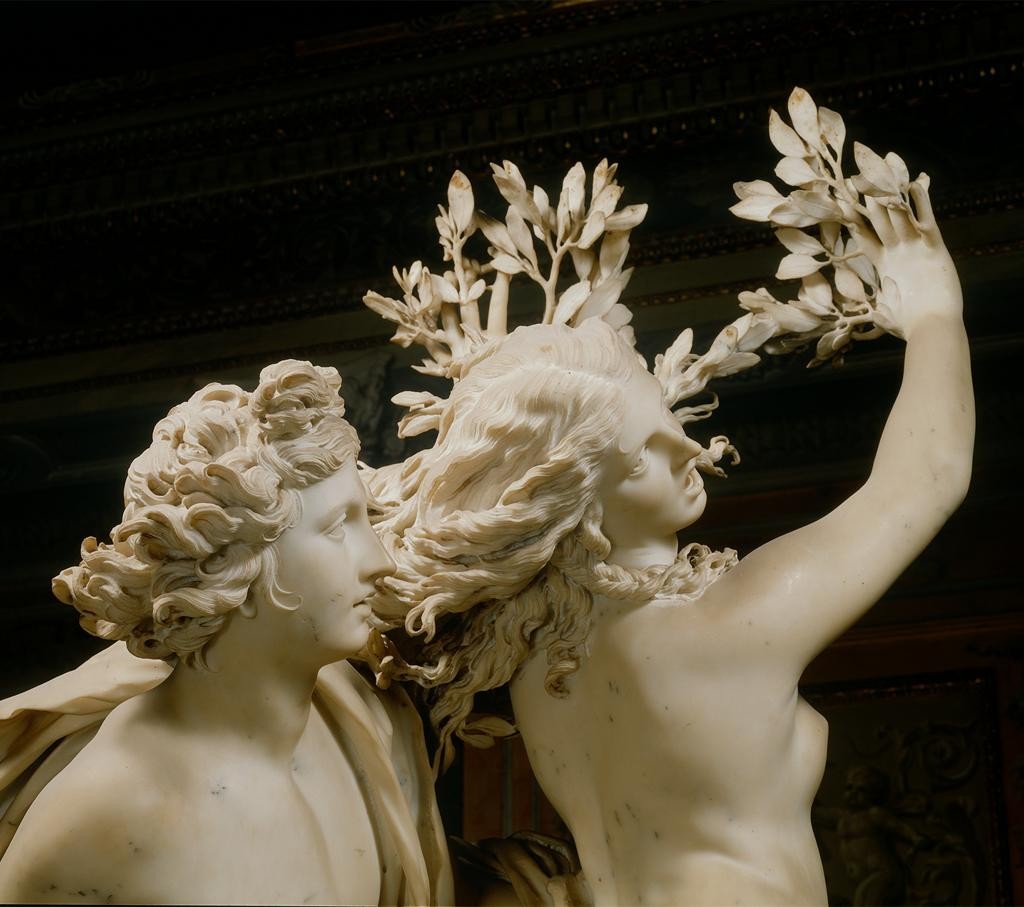
This new over packed, grandiloquent and super emotional artistic tendency spread to most of Europe and latter to America as well. Although is fair to say that in architecture at the beginning, sometimes was avoided in favor of some classicism tendence, most in the buildings facade, since the new convulsed and curved lines, plus so much over decoration produce and uneasy feeling in some of the people who commissioned the new palaces and was not welcome completely for a while in some regions and courts.
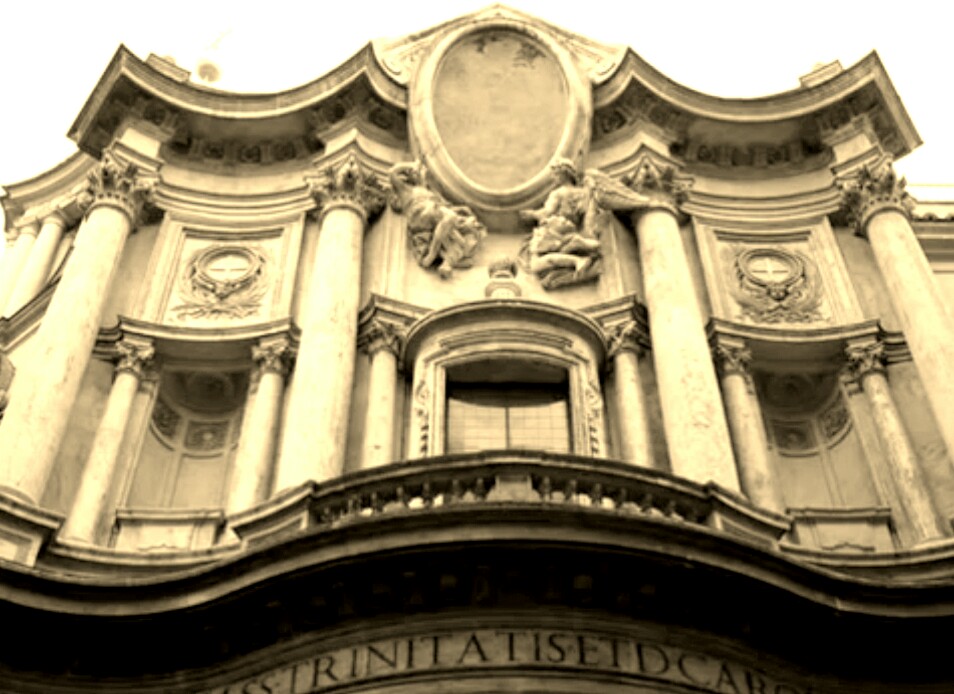
Baroque influence cover the XVII and XVIII centuries been still strong in the XIX century when, abundant Baroque architecture construction in America was still done in this style, although many of them incorporate some eclecticism as well, due to influence of other artistic styles and natives taste.
Those who entrance Baroque palaces and Cathedrals were speechless from the time they arrived to the staircase, passing through a dynamic, expectant calidoscopio of artistic elements in crescendo, to culminate in a sore of theatrical over crowded representation of vary “belle art” manifestations in the rooms, most of them in monumental and impressive dimensions.The proportion, balance and tempered equilibrium of the classicism is broken here, in favor of a convulse form that mark the Phatos of the characters in the scenes and emphasize the dynamic of movement as never before.
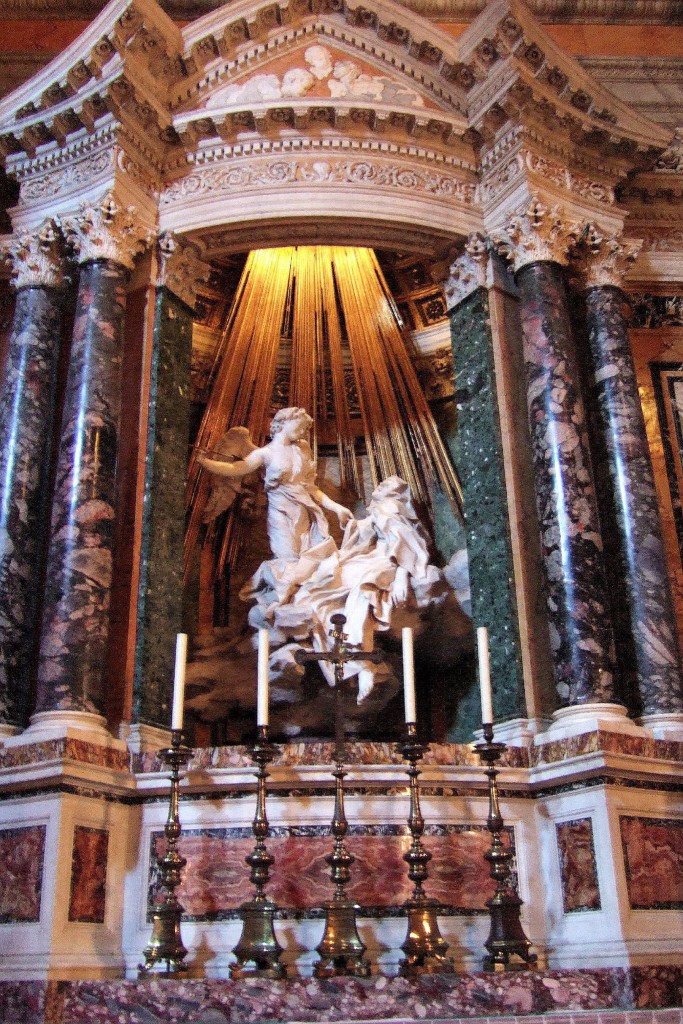
This same eclecticism plus the eccentric redundancy of elements and noisy abundance of details, applied as well to literature, music, theater and dance in that period, artistic manifestations those, from whom the plastic was constantly feeding as its inexhaustible source of inspiration and imagination. In baroque period the opera was born and developed reaching it highest glory, because with this apotheosis of artistic elements at once in a theatrical scene anything was possible, this versatile artistic manifestation flourish and actually triumph in the courts were even the Monarch and aristocracy actively participate, been also popular among the general population.
In baroque art prevail the tendency for unsteady compositions, the artists try to get away from symmetry, altering the classical relation between the axe and figures in the painting. Dynamics compositions with lots of scenic drama, emotional faces expressions, exacerbate physical gestures, (quite like in a theatrical setting as was mentioned before).

The use of light was also very important, the main protagonist element some times in a painting. For example, the elevated contrast between the light and the absence of this one, and the rhythm obtained thought the composition, facilitate the accentuation of main characters importance.
To the Tenebrism; (pictorial style of painting that use very pronounced chiaroscuro, which deep and violent contrasts of light and dark), and “Naturalisms”, was added another pictorial style during Baroque period, the wood carving Spanish imagery, as well as, diverse other thematics like portrait, wine-cellar and store rooms, know in Spanish as “Bodegones”, which were done with so exquisite details and faithfulness to originals, that feels like this objects portrayed are actually there and it is possible to touch, smell and rich them like it can be done to real things.
All were done responding to the central purpose expression “Esse est percipi” (to be is to be perceived). Although the “Store Rooms” paintings have apparently non religious thematic, this is brilliantly concealed, even though is representing daily life events. Somehow the religious references is always there to fulfil ist duty as propaganda.

Baroque art is also a colorist style in which an outburst of vibrant colours flood the artistic work, attracting the attention at the same time that mark the cadence and rhythm that viewers eyes should follow. Colour was used also to highlight the main characters in the scenes. Trough them was possible to frame the compositions more effectively, been during baroque period more pronounced with open brushstroke and centrifugal structures.
That feeling of realistic perception applied also to the sculptures; around the ones the architectural setting was designed and built in baroque art, is not possible, since they are so connected to the space in which they are located in the buildings, understand or appreciate them isolated from their original destination, in which they get; as intended, the whole transcendent meaning and tangible, almost live-like presence as part of the group.
The arrangements and correlation between different plastic elements of expression used in Baroque buildings; as fantastic sceneries, respond to a concept orchestrate to represent a grandiloquent theatrical stage act, functioning as a whole singular unity, despise its different media elements, in with every one of them however, is interconnected and even supported by each other. The same applied in Baroque art to ceramic, glass work, textiles, metalwork and furniture.
Further articles will disclose by artistic manifestation the important elements of Baroque art as well as will resume the main artists work in each region.

